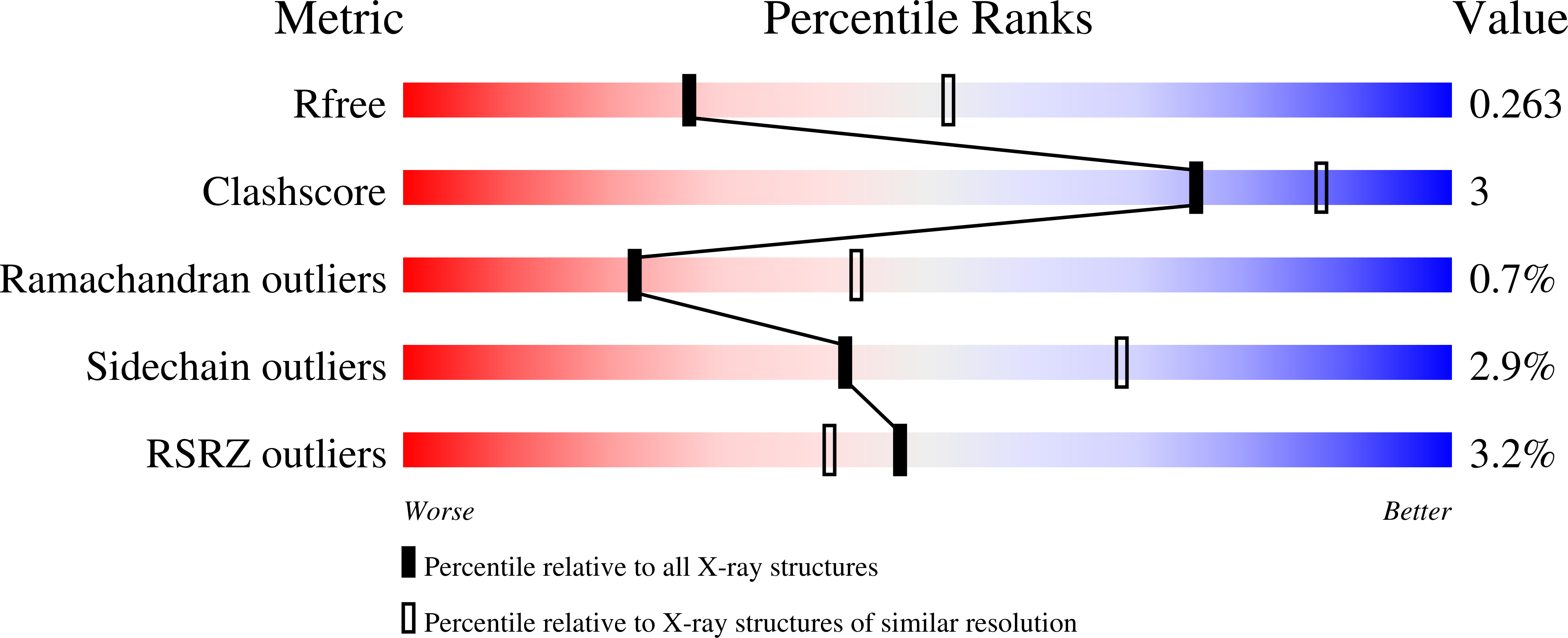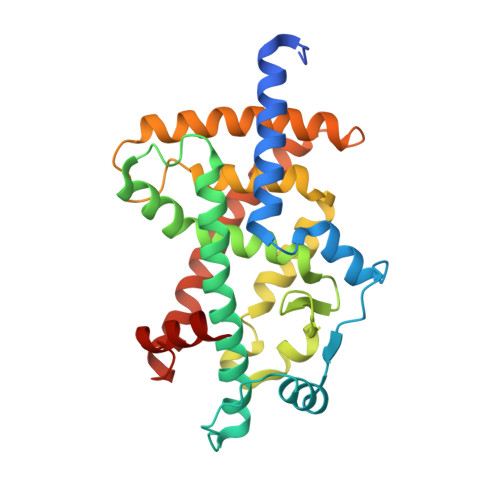PPAR gamma Corepression Involves Alternate Ligand Conformation and Inflation of H12 Ensembles.
Frkic, R.L., Pederick, J.L., Horsfall, A.J., Jovcevski, B., Crame, E.E., Kowalczyk, W., Pukala, T.L., Chang, M.R., Zheng, J., Blayo, A.L., Abell, A.D., Kamenecka, T.M., Harbort, J.S., Harmer, J.R., Griffin, P.R., Bruning, J.B.(2023) ACS Chem Biol 18: 1115-1123
- PubMed: 37146157
- DOI: https://doi.org/10.1021/acschembio.2c00917
- Primary Citation of Related Structures:
7SQA, 7SQB - PubMed Abstract:
Inverse agonists of peroxisome proliferator activated receptor γ (PPARγ) have emerged as safer alternatives to full agonists for their reduced side effects while still maintaining impressive insulin-sensitizing properties. To shed light on their molecular mechanism, we characterized the interaction of the PPARγ ligand binding domain with SR10221. X-ray crystallography revealed a novel binding mode of SR10221 in the presence of a transcriptionally repressing corepressor peptide, resulting in much greater destabilization of the activation helix, H12, than without corepressor peptide. Electron paramagnetic resonance provided in-solution complementary protein dynamic data, which revealed that for SR10221-bound PPARγ, H12 adopts a plethora of conformations in the presence of corepressor peptide. Together, this provides the first direct evidence for corepressor-driven ligand conformation for PPARγ and will allow the development of safer and more effective insulin sensitizers suitable for clinical use.
Organizational Affiliation:
The Institute for Photonics and Advanced Sensing and School of Biological Sciences, The University of Adelaide, Adelaide, South Australia 5005, Australia.



















